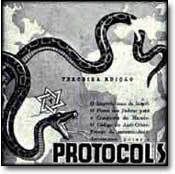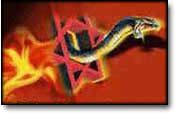Any serious effort to understand the extraordinary influence of the Zionist power configuration over US foreign policy must examine the presence of key operatives in strategic positions in the government and the activities of local Zionist organizations affiliated with mainstream Jewish organizations and religious orders.
There are at least 52 major American Jewish organizations actively engaged in promoting Israel’s foreign policy, economic and technological agenda in the US (see the appendix). The grassroots membership ranges from several hundred thousand militants in the Jewish Federations of North America (JFNA) to one hundred thousand wealthy contributors, activists and power brokers in the American Israel Public Affairs Committee (AIPAC). In addition scores of propaganda mills, dubbed think tanks, have been established by million dollar grants from billionaire Zionists including the Brookings Institute (Haim Saban) and the Hudson Institute among others. Scores of Zionist funded political action committees (PAC) have intervened in all national and regional elections, controlling nominations and influencing election outcomes. Publishing houses, including university presses have been literally taken over by Zionist zealots, the most egregious example being Yale University, which publishes the most unbalanced tracts parroting Zionist parodies of Jewish history (Financial Times book review section August 28/29 2010). New heavily funded Zionist projects designed to capture young Jews and turn them into instruments of Israeli foreign policy includes “Taglit-Birthright” which has spent over $250 million dollars over the past decade sending over a quarter-million Jews (between 18-26) to Israel for 10 days of intense brainwashing (Boston Globe August 26, 2010). Jewish billionaires and the Israeli state foot the bill. The students are subject to a heavy dose of Israeli style militarism as they are accompanied by Israeli soldiers as part of their indoctrination; at no point do they visit the West Bank, Gaza or East Jerusalem (Boston Globe August 26, 2010). They are urged to become dual citizens and even encouraged to serve in the Israeli armed forces. In summary the 52 member organizations of the Presidents of the Major American Jewish Organizations which we discuss are only the tip of the iceberg of the Zionist Power Configuration: taken together with the PACs, the propaganda mills, the commercial and University presses and mass media we have a matrix of power for understanding the tremendous influence they have on US foreign and domestic policy as it affects Israel and US Zionism.
While all their activity is dedicated first and foremost in ensuring that US Middle East policy serves Israel’s colonial expansion in Palestine and war aims in the Middle East, what B’nai B’rth euphemistically calls a “focus on Israel and its place in the world”, many groups ‘specialize’ in different spheres of activity. For example, the “Friends of the Israel Defense Force” is primarily concerned in their own words “to look after the IDF”, in other words provide financial resources and promote US volunteers for a foreign army (an illegal activity except when it involves Israel). Hillel is the student arm of the Zionist power configuration claiming a presence in 500 colleges and universities, all affiliates defending each and every human rights abuse of the Israeli state and organizing all expenses paid junkets for Jewish student recruits to travel to Israel where they are heavily propagandized and encouraged to ‘migrate’ or become ‘dual citizens’.
Method: Studying Zionist Power:
There are several approaches for measuring the power of the combined Zionist organizations and influential occupants of strategic positions in government and the economy. These include (a) reputational approach (b) self claims (c) decision-making analysis (d) structural inferences. Most of these approaches provide some clues about Zionist potential power. For example, newspaper pundits and journalists frequently rely on Washington insiders, congressional staff and notables to conclude that AIPAC has the reputation for being one of the most powerful lobbies in Washington. This approach points to the need to empirically examine the operations of AIPAC in influencing Congressional votes, nomination of candidates, defeating incumbents who do not unconditionally support the Israeli line. In other words analyzing the Congressional and Executive decision- making process is one key to measuring Zionist power. But it is not the only one. Zionist power is a product of a historical context, where media ownership and wealth concentration and other institutional levers of power come into play and shape the current decision-making framework. Cumulative power over time and across institutions creates a heavy bias in the political outcomes favorable to Israel’s organized agents in America. Once again the mere presence of Jews or Zionists in positions of economic, cultural and political power does not tell us how they will use their resources and whether they will have the desired effect. Structural analysis, the location of Zionists in the class structure, is necessary but not sufficient for understanding Zionist power. One has to proceed and analyze the content of decisions made and not made regarding the agenda of Israel’s backers operating in the USA. The 52 major Zionists organizations are very open about their claims to power, their pursuit of Israel’s agenda and their subservience to each and every Israeli regime.
Those who deny Zionist power over US Mid East foreign policy are left-Zionists namely Noam Chomsky and his acolytes. They never analyze the legislative process, executive decision-making, the structures and activity of the million member Zionist grassroots and the appointments and background of key policy makers deciding strategic policies in the Middle East. Instead they resort to superficial generalizations and political demagogy, imputing policy to “Big Oil” and the “military-industrial complex” or “US imperialism”. Categories devoid of empirical content and historical context about real existing policy making regarding the Middle East. More
Wednesday, 1 September 2010
The State and Local Bases of Zionist Power in America
Posted @
17:49
![]()
Subscribe to:
Post Comments (Atom)
![[9_10_s22.jpg]](https://blogger.googleusercontent.com/img/b/R29vZ2xl/AVvXsEjTXnQay9wzz0E6nVHrVhaHKoq_zYXDqZjijHlNDQzj90MZzInrCuVX4ciFYCiBfZ7lhlgr2bBhhnl7ddWbhdih5JbXjQYbA605TNyiq046bQqjG2A4S-nHTmh1VBTQSG6tmc23wq47QQ/s1600/9_10_s22.jpg)




No comments:
Post a Comment